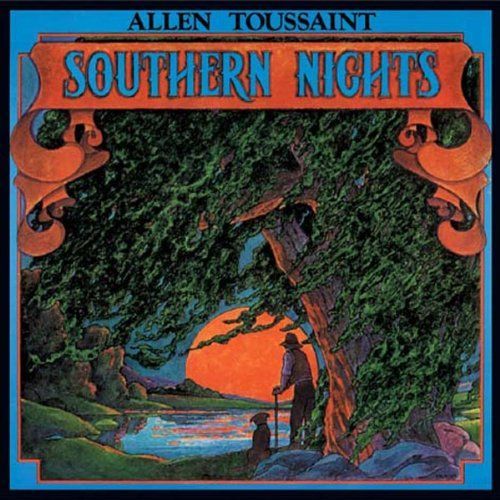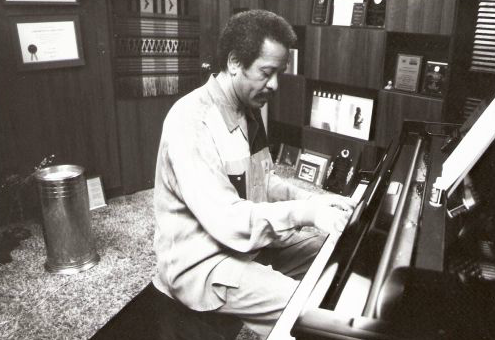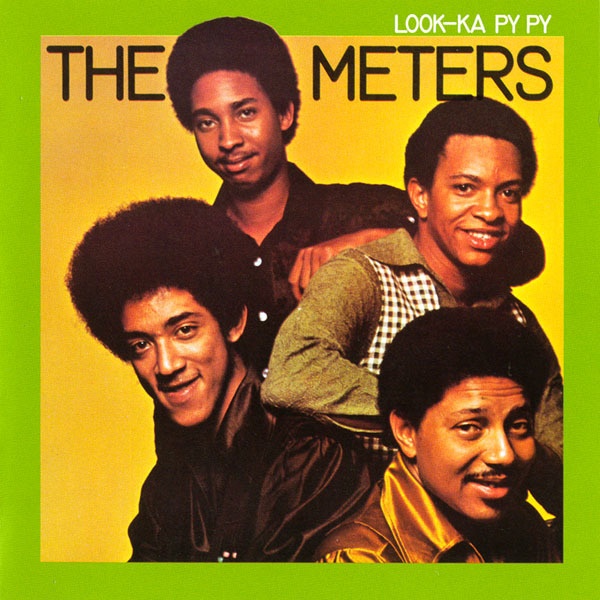Southern Nights
 Well, it’s the Toussaint holiday here in France: that
Well, it’s the Toussaint holiday here in France: that
dreary time of year when autumn is just starting to merge with winter and
families place chrysanthemums on the graves of their predecessors. And since my
November radio show is a tribute to the great singer, songwriter, pianist,
producer and generally gracious individual who left his native New Orleans roughly
a year ago for a celestial destination unknown, what more appropriate subject
for La Vie en Albums than Allen
Toussaint’s Southern Nights?
It’s a crying shame that his death wasn’t marked by a
special show to celebrate his life on the BBC. Only the cognoscenti appreciate
that this modest man, in terms of the history of black music, was every bit as
influential as Berry Gordy, Smokey Robinson, Gamble & Huff, James Brown and
others of their kidney. There may yet be a documentary on BBC Four, but then I
suppose the discreet charm of this delightful man wouldn’t have been quite so
discreet had he been as lauded as he deserved.
Even as a songwriter (although probably for contractual
reasons), he often hid his light under a bushel: as his alter ego, Naomi
Neville (his mother). Mr. Toussaint and/or Mrs. Neville wrote so many songs
that it’s almost impossible to log them. Even as a fledgling Music O’Phile, I encountered
him subliminally as the author/producer of Lee Dorsey hits that were
occasionally aired on Top Of The Pops.
‘Holy cow, what ya doin’ now?’ Working in
a coalmine, actually. Or sitting in la-la, waiting for my ya-ya.
No, clearly it wasn’t profound stuff. He was keeping that,
I should imagine, for occasional solo projects like Southern Nights and it’s only-marginally-inferior successor, Motion. But when it came to hit records,
my! could he churn them out. And the thing about the genres of New Orleans
rhythm & blues and soul that Allen Toussaint did so much to popularise is
that the lyrics are often little more than an excuse for that infectious,
quirky and quite unique rhythm.
Jessie Hill’s ‘Ooh Poo Pah Doo’ for example is pure
pounding onomatopoeia. If it’s still out there, you can find it among many
other mini masterpieces on a compilation released by the Charly label in the
late '80s: Mr. Joe’s Jambalaya. I
bought it as a cassette and duplicated it almost immediately in case anything
untoward should happen to it. Certainly it was never allowed anywhere near a
car, to risk being chewed and spewed by a cassette player.
The Mr. Joe in question is Joe Banashak, a local impresario
who founded Minit and a stable of tiny independent sister labels, for all of which
Toussaint became the sine qua non. He’s there as producer, songwriter and/or
session pianist on everything from Ernie K. Doe’s ‘Mother-In-Law’ to Irma
Thomas’s southern soul classic, ‘Ruler Of My Heart’, which Otis Redding would
modify to ‘Pain In My Heart’. And, although you won’t find them for some
inexplicable reason on this particular compilation, Mr. T. was also responsible
for Benny Spellman’s ‘Fortune Teller’ (to be covered by the Stones and a million
others) and, my personal favourite, Chris Kenner’s delirious ‘Land of 1,000
Dances’, which even knocks spots off ‘Wicked’ Wilson Pickett’s subsequent
classic.
After a stint in
the army, Toussaint teamed up with music publisher Marshall Sehorn to found the
Sansu organisation, which incorporated more boutique indie labels, for whom
Toussaint continued to play, write and produce. The customary common
denominator on records by the likes of the good Dr. John was a house band synonymous,
like Booker T. & the MGs up in Memphis, with some of the funkiest sounds
ever put down by a four-piece. The name of the eight-legged beast was The
Meters and it was via the Meters – and albums like Fire On The Bayou and
Rejuvenation – that I finally, at last, came to the shadowy maestro who
pulled the musical strings.
By the time Southern
Nights came out in 1975, as Toussaint’s third solo ablum, the Sansu team
had opened the Sea-Saint studios in New Orleans. Artists from far and wide were
now coming there in search of the magic touch: the Pointer Sisters, when they
were still a kind of retro black Andrews Sisters; that wonderful vocal trio,
the Mighty Diamonds, for a misguided attempt to blend reggae with Noo Orlinz
soul; the mighty Labelle, for the monumental ‘Lady Marmalade’; and a whole host
of disparate others, including Robert Palmer of all people. I heard the title
track of his Sneakin’ Sally Through The Alley LP at a small free
festival in a former graveyard near the centre of Bath and thought, I’ve got
to have this NOW! (unaware that it, too, was written by Allen Toussaint for
Lee Dorsey).
The modest Monsieur
Toussaint openly admitted to being much happier behind the scenes, which
probably explains why he produced so few albums under his own name. The irony
is that he had a lovely velvety tenor voice and could play the piano as fluidly
as his hero and R&B forerunner, Professor Longhair, and his contemporary
collaborator, Dr. John. He had the studio set-up, a coterie of finest local
musicians (including all four Meters) and, above all, he had the songs. The
mushy dame to whom I’m married only has to hear the song ‘Southern Nights’ and
she dissolves into jelly. She has never knowingly dissolved to Glen Campbell’s jauntier
hit version of the song.
Late of the Steve
Miller Band, Boz Scaggs picked the beautiful ballad on the same side of Southern
Nights as the title track, ‘What Do You Want The Girl To Do?’ to adorn his
hit album, Silk Degrees, just as he had picked on Aaron Neville’s fabulous
‘Hercules’, another Toussaint classic, for its predecessor, Slow Dancer.
Goodness me, it’s like a severe case of six degrees of separation. But then it
would be difficult not to
mention the name Allen Toussaint in the same breath as that of the music of New
Orleans.
Southern Nights
is replete with up-tempo funky numbers like ‘Basic Lady’ and the opening ‘Last
Train’, moody soulful pieces like ‘Cruel Way To Go Down’ and the memorable
ballads I’ve already cited. It also has the distinction of echoing its title
track before rather than
after its actual appearance, as a link between the penultimate and the final
track on the first side. It all adds up to probably the finest example of his
more personal and less commercial work.
One of those
commercial songs goes by the title of ‘Everything I Do Is Going To Be Funky’.
Everything he did was also marked by the kind of style and grace that anyone
who has ever seen the documentary Piano Players Rarely Ever Play Together
will appreciate. Although he never thought of himself as a performer, his
performance on-film suggests not only a superb pianist in his own right, but a
raconteur and educator able to illustrate so compellingly some of the otherwise
indefinable qualities that make New Orleans rhythm & blues so magical.
The Smiths’ ‘This
Charming Man’ might have been written with Allen Toussaint in mind and it’s no
accident that another cultured man, the soon-to-be ex-President Obama, had the
sense and judgement to award him the National Medal of Arts. How lovely that,
for once, such an accolade came in his lifetime. Two years later Allen
Toussaint died of a heart attack. He was ‘only’ 77, but what a packed and
creative life he led and what a legacy he left.
